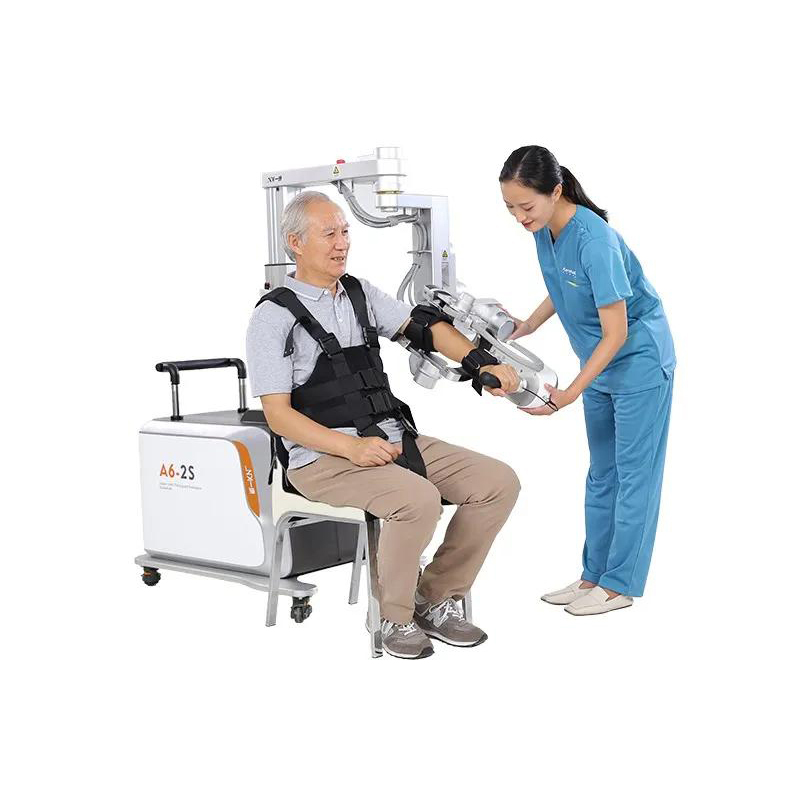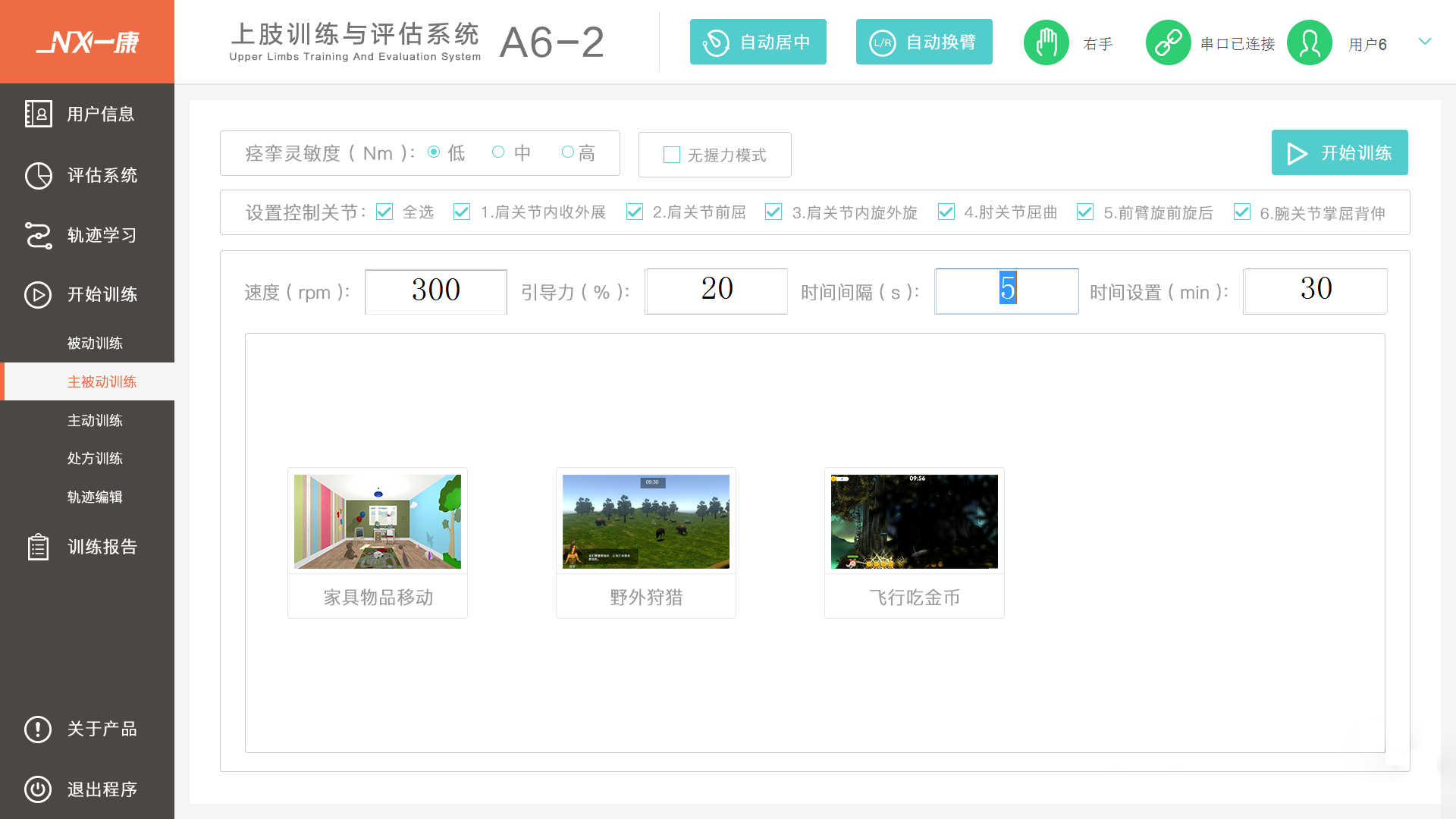In order to bring more accurate, comprehensive and effective rehabilitation treatment to more patients with upper limb dysfunction, Yeecon has developed an upper limb rehabilitation robot, which combines high precision with high technology.
This three-dimensional upper limb rehabilitation robot called “Upper Limb Training and Evaluation System A6″ is the first AI three-dimensional upper limb rehabilitation robot for clinical application in China. It can not only simulate the law of upper limb movement in rehabilitation medicine in real time, but also realize the training of six degrees of freedom in three-dimensional space. The accurate control of three-dimensional space is realized. It can accurately evaluate the three major joints (shoulder, elbow and wrist) of the upper limb in six movement directions (shoulder adduction and abduction, shoulder flexion, shoulder intorsion and extorsion, elbow flexion, forearm pronation and supination, wrist joint palmer flexion and dorsiflexion) and formulate targeted training for patients.

It is applicable to patients with muscle strength of grade 0-5. There are five training modes, including passive training, active and passive training and active training, covering the whole rehabilitation cycle.
At the same time, this 3D upper limb rehabilitation robot also has more than 20 interesting games (continuously updated and upgraded), so that the rehabilitation training is no longer boring! According to the different evaluation results, therapists can choose the corresponding training mode for patients, and on this basis, patients can also choose their own “adaptive training” according to their personal preferences.
In addition, A6 is also equipped with active training mode, prescription training mode and trajectory editing mode. A variety of training modes meet the training needs of different patients. Various situational interactive games including the training of daily activities such as combing hair and eating are available, so that patients can return to society and life to the greatest extent after recovery.

The existing fine activity therapies for upper limb and hand are boring for patients to some extend. Whether it is elastic belt for training upper limb muscle strength, fine wooden nail for training hands, or abrasive board for coordinated training of upper limbs, although patients have made some progress after a period of treatment, they often lack enthusiasm and often encounter bottlenecks. Except patients with strong willpower, many people often choose to give up at the end.
Research shows that although patients with nerve injuries have different degrees of dysfunction, and yer the neural plasticity of patients’ brains still exists. Through a large number of highly repetitive and goal-oriented training, the motor function and ability of the injured parts can be gradually restored.
At present, according to the status quo of rehabilitation treatment, when patients encounter the bottleneck during treatment, the therapeutic effect is not satisfactory and their mentality is affected. Because they have been in the medical environment for a long time, they gradually develop antipathy for the rehabilitation treatments. In these cases, such a novel upper limb rehabilitation robot can greatly enhance patients’ self-confidence and enthusiasm for rehabilitation, contributing to their recovery of upper limb function.
Read more:
Advantages of Rehabilitation Robotics
Limb Function Training for Stroke Hemiplegia
Post time: Mar-23-2022






